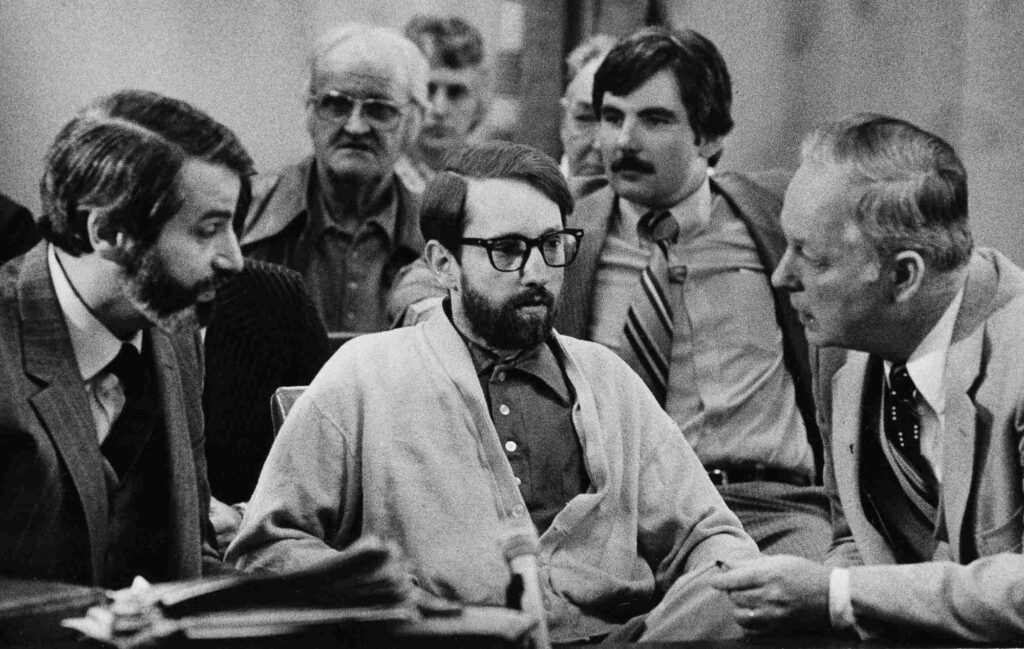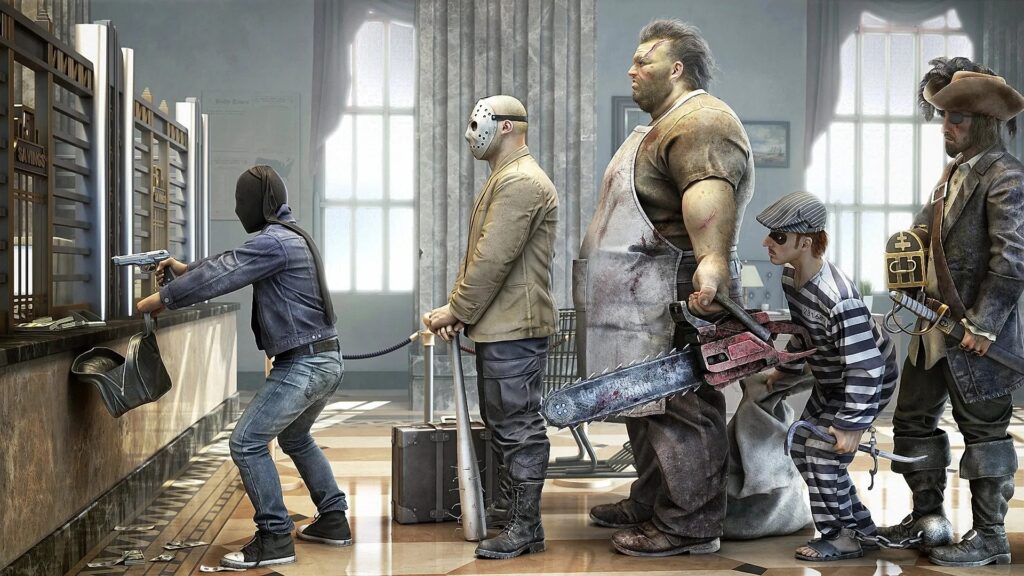Hamilton, Ohio is a city with a long history, beginning as Fort Hamilton (named after the Broadway show that wouldn’t be staged for another two hundred and twenty-four years) when it was used as a supply and troop relay station during the Northwestern Indian Wars. The Fort was abandoned after the Greenville Treaty was signed, but by that time several farms had been established nearby and the trade business began to flourish.
The town was officially platted and seated around 1803, the year Ohio became a state and since then has grown to be one of the largest towns in Ohio. It would go on to play some small role in many historical events, and it saw many early historical figures.
But it was one event that occurred on Easter Sunday in 1975 that would bring the town to national attention – just not in a good way. That was the day James Urban Ruppert shot and killed his mother, and his brother and his wife, and quite a few of his nephews and nieces. Eleven lives were lost that day and would be considered the largest mass-shootings on American soil for years to come.
Since then, people have had questions, like how something like this could have happened? Were there any signs that somehow were missed that indicated that an entire family was about to be slaughtered? The answers to those questions turned out to be rather heartbreaking.
The Ruppert Family
To say that James Ruppert had a difficult childhood would be a bit of an understatement. He was the second child born to Leonard and Charity Ruppert, two years after the birth of his older brother, Leonard Jr. By most accounts, the senior Leonard was a cruel and vindictive man, an alcoholic with a violent temper. Charity must have noticed that the junior Leonard was taking after his father, in terms of temperament, as much as a small kid could, anwyway. She would later say that once she had known she was pregnant with James, she had wished her child would have been a girl as she did not want to be reminded of what Leonard Senior was like.
As it turns out, though, James was nothing like his father or his brother. He was quiet and tended to be very helpful whereas Leonard Junior was loud, obnoxious and a bit of a bully.
James was twelve years old when his father died of tuberculosis. The family was living on a farm at the time, raising chickens, and being around the dusty chicken coop and being outdoors on a farm wreaked havoc with James’ asthma.
This made it hard for James to have a normal childhood or do any of the things kids were doing at the time, from playing sports or just being outside climbing trees, which is likely a large part of what drew James deeper into depression.
When he was sixteen, James tried to kill himself by stringing some bedsheets together and attempting to hang himself. This clearly didn’t work, nor was it taken as a clue that young James needed some mental health counselling (at the very least) as it would have been like today. Since this happened in the 1960s, not much had been done.
The Easter Sunday Massacre
By 1975, everything seemed to be great with Leonard Junior. He had a lovely but growing family, a decent job so he could provide for his family, never mind that his wife was one of the few girls that James had once dated. Meanwhile, James struggled to make friends, he had dropped out of college and all his employment opportunities (which were few and far between) were less than ideal.
The day before Easter (March 29th) was James’ birthday, which he spent shooting beer cans with a pistol and a rifle along the banks of the Great Miami River. That night he went to his favorite hang-out spot, the 19th Hole Cocktail Lounge where he had a long conversation with a lady who worked there named Wanda. He spoke of being depressed (although maybe not in those exact words) and over the many frustrations in his life, saying that he was nearing the breaking point. He was angry at his mother for her constant demands on his time, his jealousy over the brother who seemed to have it all, yet kept taking more, he was nearing being evicted from his home.
After that conversation, James left the bar making a comment about “taking care of things” and when he returned a short time later, Wanda asked if he had done it. “Not yet,” he said, and went back to drinking his problems away.
James woke up on Easter Sunday around four o’clock in the afternoon to find his mother in the kitchen cooking Sloppy Joes while Leonard Junior and his wife Alma watched. Most of the kids were in the living room playing quietly after coming in from an easter egg hunt. James produced his pistol and shot Leonard Junior in the head, followed by his wife. As their mother lunged toward James, he shot her too. Then he went into the living room and began shooting the children one by one, until all eight of them were dead.
At that point, James put the gun down and called the police saying there had been a shooting. After he hung up the phone, he opened the front door to the house and sat down to await the police.

James Ruppert On Trial(s)
To say that the crime shocked everyone would be a massive understatement. First off, it occurred in what most people considered to be a calm, peaceful suburban neighborhood. Secondly, most people commented that the Ruppert family was one of the nicest families in the area, although looks can often be deceiving. Of James, they found him to be shy and timid, not the kind of person who could enact such violence on others.
When the police arrived at the Ruppert house, James was instantly taken into custody but refused to answer any of the police’s questions, beyond stating that he had shot his entire family.
The entire crime scene was a bloody mess, with each victim shot once or twice and in places blood had pooled so much it was seeping through the floorboards. But, other than that, there was no sign of violence, no sense of a struggle other than a single overturned trash can.
James began to lay the groundwork for his defense nearly as soon as he was in custody – he was going to plead insanity.
In June, 1975, James Ruppert was tried before a three-judge panel with two of the judges finding him guilty on all eleven counts of murder. However, almost immediately, the judges declared a mistrial stating that the law was unclear as to whether or not all three judges needed to reach a unanimous verdict.
Before he could be tried a second time, the defense asked for a change in venue saying that he did not believe that James would receive a fair trial after all the publicity the case had gotten in the media, including the first trial’s ending in a mistrial.
A second trial began on July 23, 1975, and went very similarly to the original. The major exception was the inclusion of evidence presented from witnesses who had seen James shooting beer cans down by the river with a pistol that had a silencer attached to it. Again, James Ruppert was found guilty of all eleven murders.
On appeal in 1982, his lawyer, Hugh Holbrock argued that James Ruppert was criminally insane, hiring a number of professional psychiatrists to examine James and testify about his mental health. This verdict was overturned as well and James Ruppert was forced to stand trial a third time.
This trial was very similar to the earlier two a few years before, but also included expert testimony from a few psychologists and psychiatrists. This time, the three-judge panel found him guilty of two murders (that of his mother and his brother) but not guilty by reason of insanity for the rest (his brother’s wife and the children).
The End
On June 4, 2022, James Ruppert died (natural causes) while still being incarcerated at the Franklin Medical Center in Columbus. Three times previously, he had been gone before the parole board three times his request was denied each time. The last time, which was in 2015, the parole board released a statement that James Ruppert was not a good candidate for release because he refused any of the rehabilitation programs that had been offered to him and he seemed reluctant to ever do so. They likewise stated that they had received several letters from the community asking them to deny parole, reminding the courts that he had murdered eleven people in total and not once showed even a little remorse.
The house, which resides on Manor Avenue in Hamilton, stood vacant for just over a year before someone went in and cleaned the place up, tore up the bloody floorboards and replaced the carpets.
In 1977, a new family moved in, supposedly unaware of the horrors that had occurred in that house two years before. People say the family fled in the middle of the night a few months after moving in when they complained about hearing disembodied voices coming from the walls, observing things moving on their own, and generally being creeped out over the place.
However, I am personally a bit skeptical over these claims based on one single fact. The year was 1977 … also that year, a wildly popular book by an author named Jay Anson about an All-American family that moved into a house not knowing anything about a gruesome murder that had taken place there a few years before. Soon, the family would start to notice strange things going on, from flies acting strangely to objects moving about the house on their own, and then voices that seemed to emanate from the basement where the murder had occurred, causing the family to ultimately run away in terror in the middle of the night.
The Amityville Horror was initially believed to have been a true story, although over the years that claim has become more and more far-fetched, if not by this point clearly debunked. But, the novel was the talk of the town around that time and with the similarities between the two stories, it kind of makes me feel like a copycat story more than anything else.
Since then, the address has remained a private household with numerous people residing there. If any of them has experienced any psychic phenomena or demonic spirits, it doesn’t seem like they told anyone.



